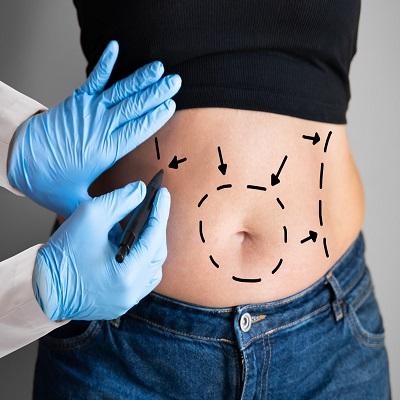Liposuction is one of the most popular cosmetic procedures for body contouring, helping individuals eliminate stubborn fat deposits. While it is generally considered safe when performed by a qualified plastic surgeon, it is still a surgical procedure that carries potential risks and side effects. Understanding these risks can help you make an informed decision before undergoing treatment.
In this blog, we will discuss the possible risks, side effects, and how to minimize complications associated with liposuction in Islamabad.
Common Side Effects of Liposuction
After liposuction, it is normal to experience some temporary side effects. These side effects are typically mild and resolve on their own within a few days or weeks. Here are the most common ones:
1. Swelling and Bruising
-
Swelling is the most common post-surgical effect, peaking in the first few days and gradually subsiding over weeks or months.
-
Bruising may occur due to small blood vessel damage but typically fades within two weeks.
2. Pain and Discomfort
-
Some soreness or discomfort is expected, but pain can usually be managed with prescribed medications.
-
The level of pain varies depending on the extent of fat removal and the individual's pain tolerance.
3. Numbness or Tingling
-
Temporary numbness in the treated areas is common due to nerve irritation.
-
Sensations typically return within a few weeks to months.
4. Fluid Retention or Drainage
-
Fluid accumulation in the treated area can cause temporary swelling.
-
Some patients may experience fluid leakage from incision sites in the first few days.
5. Skin Irregularities
-
Uneven fat removal, poor skin elasticity, or improper healing can sometimes result in lumpiness or rippling.
-
Wearing compression garments can help smooth the skin.
Potential Risks and Complications of Liposuction
Although complications are rare, they can occur, especially if the procedure is performed by an inexperienced surgeon. Below are some potential risks to consider:
1. Infection
-
Any surgical procedure carries the risk of infection, but proper post-operative care can help prevent it.
-
Symptoms of infection include fever, redness, swelling, or pus discharge from the incision sites.
2. Blood Clots or Deep Vein Thrombosis (DVT)
-
Prolonged immobility after surgery can increase the risk of blood clots.
-
Walking around and following post-surgical movement guidelines can reduce this risk.
3. Excessive Bleeding
-
Minor bleeding is expected, but excessive bleeding could indicate a complication.
-
Patients should avoid blood-thinning medications before and after surgery.
4. Skin Necrosis (Tissue Death)
-
Poor blood circulation in the treated area may lead to skin damage or tissue death.
-
This is rare and usually occurs due to excessive fat removal or poor healing conditions.
5. Fat Embolism
-
In very rare cases, loosened fat particles may enter the bloodstream and block blood vessels, leading to serious complications.
-
Immediate medical attention is required in such cases.
6. Seroma (Fluid Build-Up)
-
Some patients develop fluid pockets under the skin after surgery.
-
This can sometimes require drainage by a surgeon.
7. Irregular Contouring or Asymmetry
-
If too much fat is removed unevenly, it can lead to an unnatural appearance.
-
Selecting an experienced surgeon minimizes this risk.
How to Reduce Risks and Ensure a Safe Recovery
To minimize complications and ensure smooth healing, follow these essential tips:
✔ Choose a Qualified Surgeon – Ensure your plastic surgeon is board-certified and experienced in liposuction.
✔ Follow Pre-Op Instructions – Avoid blood-thinning medications, smoking, and alcohol before surgery.
✔ Wear Compression Garments – These help reduce swelling, improve healing, and enhance contouring results.
✔ Stay Active, But Avoid Strenuous Activity – Light walking helps circulation and reduces the risk of blood clots.
✔ Maintain a Healthy Diet – Proper nutrition aids in healing and prevents excessive swelling.
✔ Monitor for Warning Signs – Contact your surgeon immediately if you notice signs of infection, excessive swelling, or unusual pain.
Who is at a Higher Risk of Complications?
Certain individuals are at a higher risk for complications from liposuction. It is important to discuss your medical history with your surgeon before undergoing the procedure. Risk factors include:
-
Obesity or being significantly overweight
-
Poor skin elasticity
-
Underlying medical conditions (such as diabetes or heart disease)
-
Smoking or excessive alcohol consumption
-
Previous history of blood clots
Final Thoughts: Is Liposuction Safe?
Liposuction is a generally safe and effective procedure when performed by a qualified and experienced surgeon. While side effects such as swelling, bruising, and numbness are normal, serious complications are rare. By following post-operative care instructions and maintaining a healthy lifestyle, you can minimize risks and achieve the best possible results.

